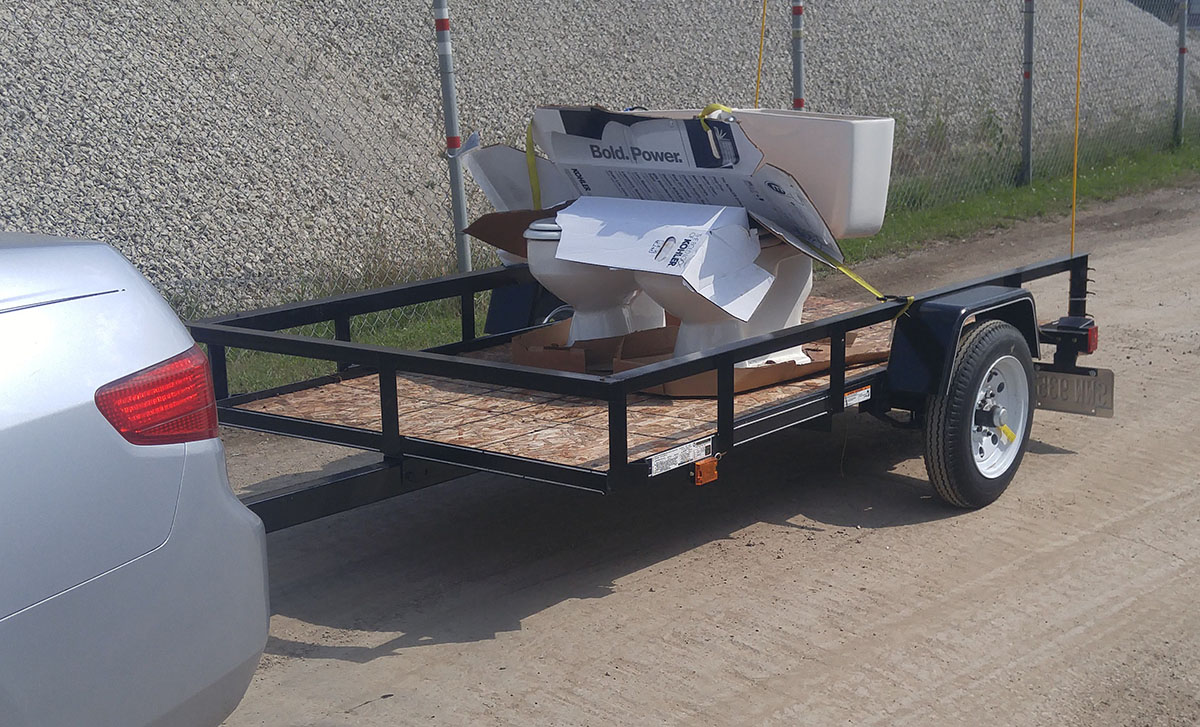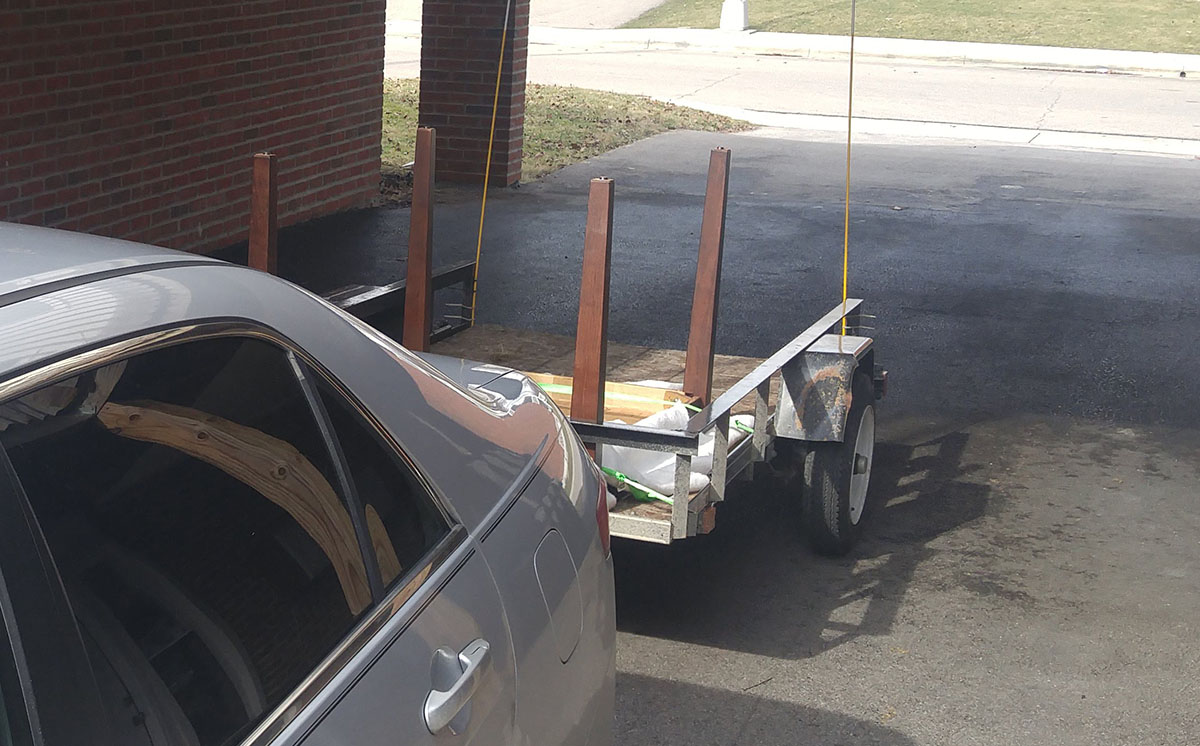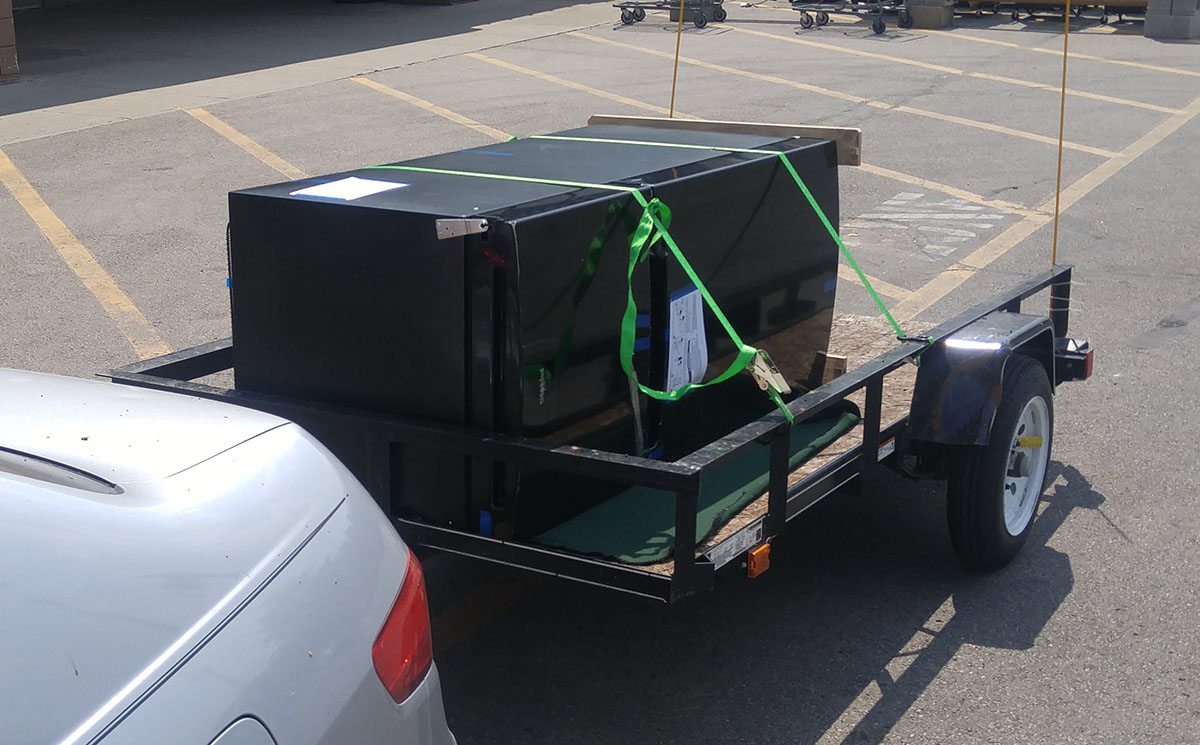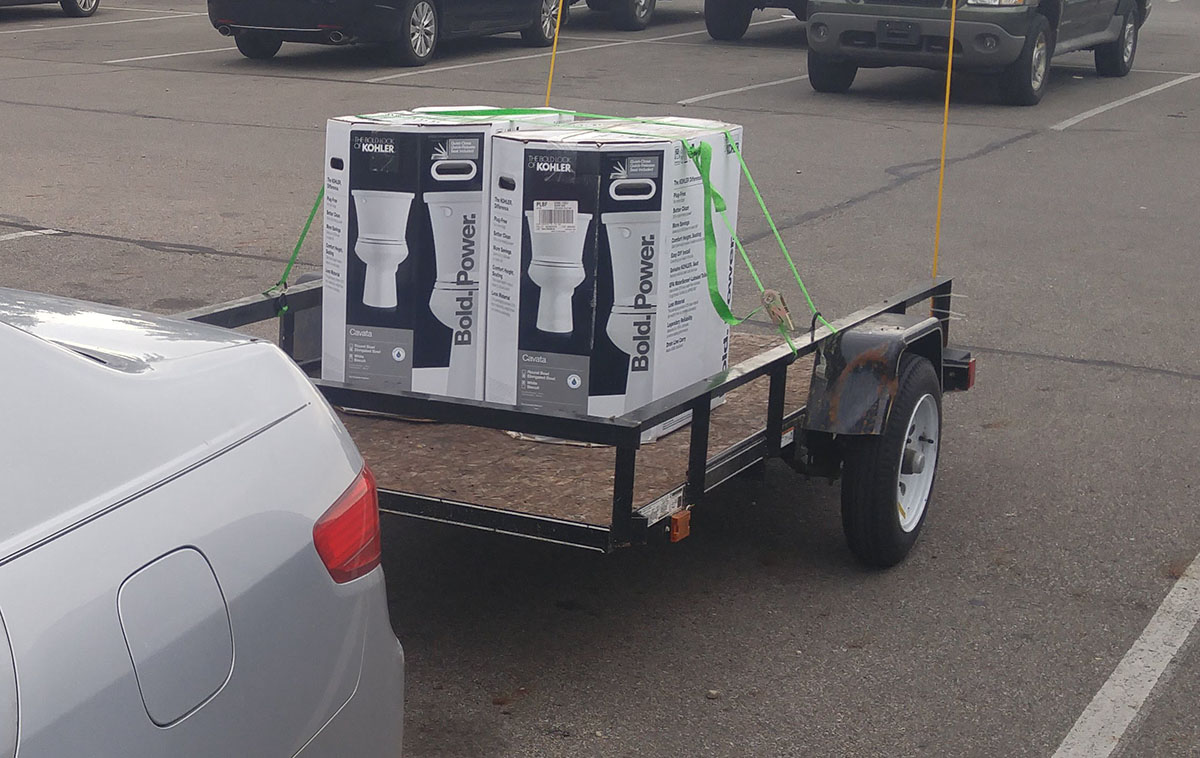All posts by Nathan Ruffing
Cincinnati to Columbus Ohio on the Ohio to Erie Trail
The Ohio to Erie Trail website is here, click for a great interactive map.
Thanks to Aaron for accompanying me on the journey!
Cleveland coming soon, hoping for a warm November to get to a Browns game!
Subscribe
Click here for a summary of my first bike trip to Cincinnati.
Market Prediction Results, So Right and So Wrong
Check out this timeline of market predictions. I was WRONG. The guy who was right wishes to remain anonymous, so we’ll call him Sven Laarson.
Nate on 9 Dec 2015, S&P 500 = 2,048
Sven on 29 Mar 2016, S&P 500 = 2,055
“Put me down for 2,750 before 1,630. Then we’ll see 1,500 eventually so you’ll get your buying opportunity in the next 30 years. You could miss out though. If it hits 3,300 before the next crash it could never see 1,630 again!
We’re in the first few years right now of the fabled ’15-year bull market’. Could be 20 years. Nothing but up. The dollar will get stronger too (short term, no 15 year bull for the dollar) so watch silver for a good low price to buy on. I’ll start buying at $9 an ounce.
There are less and less obstacles in the way of all markets around the world. Growth will continue even if our local politicians in USA encourage us to vote by convincing us to be divided. Things are going great and America will be made even greater again. The entities involved in the stock market of all entities have no obstacles. The system is built for them and it helps them bring the greatest good to the most people.
Any and every moment could bring a revolutionary invention and it would be available to the whole world within years. With that powering the markets up what could stop our human growth? Almost nothing.
GDP will be measured differently soon to account for all the value we get for free (without triggering a GDP recorded event). E.g. Facebook, Whatsapp, Google, etc. It will show that we are growing at an alarming rate and just not recording it properly. We are accidentally producing less carbon emissions without the great famishes and sacrifices that were warned. Technology. No one needed to force it. The US constitution released human potential. That worked because humans are inherently good. Even in Afghanistan in all out war the vast majority of people just want to work and keep what they earn. With those humans having more access to opportunity than ever in history why would the markets collapse in droves?
It isn’t a deck of cards. It is a rain forest. Very well balanced. Everything is specialized and as a whole the system is diversified (anti-fragile as you say).”
Nate on 15 Dec 2016, S&P 500 = 2,262
“Sven,
The forwarded message is the bet that I offered you guys almost exactly a year ago (I bolded the bet and put it in red). I’m glad you didn’t take it because I would have lost. The S&P closed above 2,230 on 7 December.
Of note, my man Hussman is especially negative this week:
See you guys soon,
Nate”
11 Jan 2018, S&P 500 = 2,768
Sven’s hyper-optimistic prediction of 2,750 from March 2016 came true in under two years. S&P 500 up 35% since the prediction.
June 2018, S&P 500 = 2,718
Nate is glad he invested in other things and didn’t short the market, but remains bearish.
“I still subscribe to the idea that the longer it takes the worse it will be.”
Sven is glad he stayed in the market and remains bullish.
After some discussion, we determined that since we didn’t agree on an amount for the bet, and we didn’t shake hands, only pride was won and lost.
11 Oct 2018, S&P 500 = 2,728
I write this post because the S&P 500 just dropped 152 points in two days and everybody noticed it and talked about it. 2,728 only brings us back to July however. and …
Since the day in December 2015 that I predicted “down 22%,” the S&P 500 is up 33%.
This weatherman is still predicting rain:
Solved All the World’s Problems in One Sitting
Politics and Religion
I have discussed these things so many times on so many random occasions with so many different people that I can’t remember. It’s time to sit down and record it all. This also happens to be my 200th post, so what better time than now?
Politics
The Environment
“Global warming” / “global climate change,” – we should call this thing we all talk about “Global Carbon Transfer.” That’s what it is and always has been. This is directly measurable. It is completely accurate to what we are actually doing. We know that we are transferring carbon. The name Global Carbon Transfer also allows for consideration of other unknown effects that we have yet to identify that nobody even talks about. We are transferring a lot of carbon from the ground to the atmosphere. This is an indisputable fact.
I personally believe we are affecting the climate as well. When you start consistently transferring one substance within an equilibrium, which Earth is, and which we did with carbon starting in the mid-19th century, there will be change. The burden of proof should be on those saying that there won’t be change. Tell me how we can make a globally significant change in the composition of the atmosphere and it doesn’t have unintended consequences. How?
We should do something about Global Carbon Transfer, and saving the environment is not even the most important reason:
- We (the United States now) fight expensive wars for energy resources. We should slow or stop this. We should challenge our consumer culture to save before we fight wars to waste energy on luxury comforts. Challenges are good for people and for countries. This challenge is worth confronting.
- Heavy reliance on energy makes us weak from a national defense standpoint.
- The most effective way to change our habits / culture / technology is to allow the price of energy to increase to a level where people have to make reasonable sacrifices to save energy. Yes, I am saying $10-$15 a gallon for gas. Yes, this might “crush our economy” in the short term. The media would say there’s a “crisis.” I am saying it is worth it. Solar panels would naturally reach grid-parity. Carpool. Produce and buy local. Vacation local. Fix goods instead of trashing them and buying new stuff. Choose a fuel-efficient car. Turn off the air conditioner.
- Countries, like Germany especially, are way ahead of the US in implementing renewable energy sources. Any excuses for why this is the case are just excuses. We can win at this too.
Trump’s policy of “bringing us back to the old days” by continuing as world police and opening the energy flood gates to keep prices down is the policy of his with which I disagree most strongly. I wrote this in December of 2016.
We should create jobs and encourage education that has a future. Energy efficiency is the future, we have to transition, and we will be best at it if we have to consider our energy usage.
Terrorism
Using the label of “Muslim” to help identify terrorists is wrong and we have better ways of identifying terrorists than this unfair and dangerously broad label that includes many many good people. Most terrorists have called themselves “Muslim.” That does not mean that all Muslims are terrorists. What everybody missed while babbling on and on over the “Muslim” issue is that Saudi Arabia was not on Trump’s banned country list. Fifteen of the nineteen 9/11 hijackers were from Saudi Arabia, and yet they are still essentially treated as an ally somehow, and have been for decades. The media doesn’t talk about this.
Terrorism can be best fought by a reduced reliance on foreign oil, both because:
- Our involvement globally is lessened, and
- Because less demand in the US lowers the global oil price, which reduces terrorism funding.
Notice that using less oil / energy goes to the root of each of the first two subjects in this post: the environment, and terrorism.
Race
Americans are Americans first. Labels, poles, categories in the “news” media that separate by skin color or any race / nationality label are divisive and wrong.
Slavery was very very bad. Its long-term effects are worse than we typically allow for. An entire group of people was violently separated from their heritage and stripped of their culture. This takes generations to heal. This country fought its most deadly and costly war mostly over this issue, and the right side won in 1865. Blacks and whites fought together. Segregation continued after slavery ended, and that was wrong too, but that legally ended in the 1960s. We should celebrate our progress regardless of how far we think we still have to go.
On affirmative action, I agree completely with Justice Clarence Thomas when he ruled on Adarand Constructors v. Peña. Affirmative action is wrong.
Both sides of the media stoke and worsen any race problems that we may have. Denzel Washington, Will Smith, Grant Hill, Chris Rock, Spike Lee, Jay-Z, Kanye West, Floyd Mayweather Jr., and Ben Carson hire a bunch of white people and start their own media company to include a news channel. Label it something non-racial, just like the existing media conglomerates are labeled, and cover all news as they see it just like the existing media does. What would that look like? Compare that to what we have. It would be better.
Immigration
Mexico is a country. People from Mexico are Americans once they are citizens, just like every other American.
We have allowed many Mexicans – mainly because of Mexico’s proximity, and its poverty and violence – to enter illegally for a long time. That was wrong. We should not have allowed that and we should stop allowing it.
However, to all-of-a-sudden now hunt down illegals and send them out would be wrong also. It is not that simple. I’ve heard some interviews and it sounds like the law vs. the policy vs. the actual enforcement situation are each entirely different things especially in this case. Ask a border patrol agent about this. Only they really know the situation there. The rest of us are just arm-chair quarterbacks. Will we care about what’s happening there in 2 years when Trump and the media have moved on to who knows what other subject?
There should be a process to document all people living in the US and either humanely send them out or get them paying taxes. Leaving them in limbo is bad for everybody.
US Manufacturing
This is the issue on which I most agree with Trump.
We should make the tariffs at least fair so that we have a balanced society. Massively favoring foreign workers to the exclusion of our own is wrong. We know it caused the “rust belt” in the mid-west and somehow fixing it gets labeled as an insane anti-global-economy trade war. How? The tariffs should have some semblance of equality. They haven’t been even close since the mid-1990s. Almost my whole life, I have used goods that say MADE IN CHINA. We know we don’t make anything anymore and we know why. The rest of the world may be unhappy when we fix the situation, (are they even unhappy, or is that a media illusion?) but we should make the deals fair.
On this issue, I’m not even saying that it was wrong to make the deals originally. I’m saying that the current extreme situation calls for some action, some change.
To go further, I believe that the lack of manufacturing jobs contributes to the current opioid epidemic because of the large groups of people with nothing to do. We have entire regions full of abandoned towns.
US Debt
We are in a lot of debt, both as a group of consumers, and our federal government. The Chinese and other creditors have a lot of cash. This puts us at a disadvantage economically. They are beating us at our own game. They own our dollar.
How does this connect with leveling the tariff playing field, or with interest rates? I don’t know that answer, but considering that economists say exactly opposite things from each other, it appears economists don’t know either, so I will just say:
Big debt is a big disadvantage.
I don’t even know which side is better on this. They each blame the other and they each run huge budget deficits.
Entitlements
Government handouts make dependent groups of people and entitlements don’t fix problems. Obamacare was the issue with which I disagreed most with Obama. How he thought that a 1,000+ page confusing medical care handout to a country – that’s us, the United States – full of people who can’t even stop eating to improve their health is baffling.
The level for being a “disabled veteran” is so low that a guy who bicycled from Columbus to Cleveland and Cincinnati and back for fun got labeled “disabled” for some lower-back and neck pain. It’s a disgrace to those who are actually disabled. That guy is me. I told the truth on my exit exam. I don’t take the money, but I’ll take the medical benefits because who knows what they would cost me considering I would have to pay government prices for them and my once-per-year medical check-up doesn’t drain the system anyway.
Guns
The First Amendment gives us the right to peaceable assembly. Boring!
The Second Amendment says,
… the right of the people to keep and bear arms shall not be infringed.
Not boring! Guns!
The Second Amendment is about guns, right? Yes, that is half of it. What gets lost in this debate is that the real power behind it is the right to assemble in a firearms club – a militia. The first part says,
A well-regulated militia, being necessary to the security of a free state, …
I believe the Second Amendment gives the right for individuals to own guns. I believe it is important for people to understand guns and be able to responsibly use them. I own guns and I know how to use them.
Guns today are so much more effective now than they were when the Second Amendment was written that regulatory laws should delineate among different types of guns and regulate accordingly. A semi-automatic rifle, even a .22 caliber, enables one person to kill many unsuspecting people, even hundreds of people. I am for some gun control.
So:
For you “gun collecting, de-regulate machine guns” nuts out there: if the scenario you are preparing for happens, you are going to run out of ammo. You will run out even faster with a stupid machine gun. Go to the local shooting club, be normal, make some friends, and talk guns. Those relationships will be worth thousands and thousands of rounds when the revolution goes down that you so love preparing for.
For you “no guns equals peace love and harmony” kumbaya hippie liberals out there: I have news for you. Guns exist. People do violent things sometimes. Guns are indeed more powerful now than before. They are also so easy to make now that you cannot eliminate all of them. So, if you can’t stomach taking on the responsibility yourself, or can’t stomach going to a shooting club to learn about a fact of life, then appreciate your law enforcement who walk the street everyday wearing a uniform that says, especially to criminals with guns and no uniform, “I have a gun, and I am here to use it if you fuck with me or anybody who is following the law.”
I thought seriously about applying to be a cop one time. For those few minutes of consideration, as I thought about what that would really mean for me, I gained a lot of respect for the police.
Religion
People should have a reason to get dressed up and go somewhere on Sunday morning. We should shut down the main streets on Sunday like they do in South America.
If you’re atheist, get dressed up and walk around in a park for no reason.
If you are from one of those Saturday religions who thinks the rest of us are pagan sun worshipers, OK Saturday is fine too.
Marriage: get married when you’re ready. Have a wedding. Throw a party and let your family and friends celebrate your relationship. Weddings are awesome.
Funerals: who is going to organize the ceremony when you die? If you don’t care, or you don’t want a ceremony, it doesn’t matter, the ceremony isn’t for you anyway asshole. You’re dead.
Catholicism has the best music and the best ceremonies. The Catholic Church takes a clear stand on various issues. I go to Catholic church on Sunday and I’m going to keep going for the rest of my life.
Ventures Update September 2018
695 Riverview Drive
I have been renovating apartments consistently since May. The rent is paying for the renovations and the apartments keep getting better and better as I develop my system.
There is one empty right now with a waiting list for when I finish it.
Click here for the building’s website.
Writing Landlord Book!
Together with my neighbor landlord who has 40 years of experience with 40+ units, I am writing a book. For a title, I am thinking:
The Real Estate Reality Book: How to Make 10s to 100s of Thousands of Dollars Doing Actual Work, Creating Actual Value as a Real Estate Investor
Chapters:
- What is a Landlord Really? A Short History and the Modern Landlord
- Should I Even Do This? Guiding Principles for Your First Purchase, and Property Evaluation Spreadsheets
- Do It Right. Pride of Ownership and Money Come Hand in Hand
- Do It Myself, or Hire It? The “Money Flow Chart” Decision Tree
- The Numbers. Quantitative Analysis of Owning Real Estate
- Just Pick a Number and Use It. The “GRM Continuum”
- Operator’s Manual: Which [_____]I Buy and Why
- Operator’s Manual: Tools Required
- Operator’s Manual: Spreadsheet by Unit
- Operator’s Manual: Dimensions Reference
- (Almost) Passive: Hiring a Property Manager
Real Estate Agent
I am selling my parents’ house:
I also made a video for another agent on his listing just like that. It came out great, and I’m looking to do more of them for a fee.
Nate TV
The What to Watch series got too much too handle weekly and I covered too many subjects to effectively get people involved.
I am starting the very specific channel, Nate the Columbus Commuter Biker
Kineomen
The venture capital thing is challenging. I am getting with my brother to make a list of lessons learned as we go forward in this type of pursuit. Kineomen is alive and well.
Simple Kneads Gluten-Free Bread
Simple Kneads is consistently producing its quality product and growing as a brand.
Vino de Coco
I still plan to visit the Philippines. Still.
the Columbus Commuter Biker
Subscribe here. Great videos … periodically.
Coming Soon
- Columbus to Cleveland Ohio to Erie Trail video.
- Columbus mapped out by hubs and bike trails.
- Restaurant cycling destinations and reviews.
Real Estate Summary, July 2018
Average Sale Price
- $238,655, Jul 2018, 4.9% increase 1-yr, 37.2% increase 10-yr
- $227,572, Jul 2017
- $173,940, Jul 2008
The year-over-year increase in price for July 2018 compared with the YoY increase in July 2017 is less, so the increase has slowed. The YoY increase in July 2017 was 6.4%. From the MLS chart, the last time that the price increase was this slow was late 2014, so it appears by that measure the market has cooled off a bit, or is just a bit less hot. The price still increased don’t forget. That is good. The last time there was an overall YoY price decrease was 2011.
Source: http://www.columbusrealtors.com/stats/
Months Supply of Inventory
- 1.9 months, Jul 2018
- 11.2 months, Jul 2010 – highest for July in last 10 years.
- 2.0 months, Jul 2017 – last year’s hot market
We are still in a historical seller’s market.
Source: http://www.columbusrealtors.com/stats/archives.aspx
Interest Rate, 30 Year Fixed-Rate Mortgage
- 4.54%, 6 Sep 2018, most recent
- 4.46%, 8 Mar 2018
- 3.95%, 4 Jan 2018
- 3.41%, 7 Jul 2016, 5-year low
- 6.04%, 20 Nov 2008, the last time rate was over 6%
How much has the 30-year fixed rate gone up? It increased above 4% in January this year, reached 4.46% by March, and has held steady since then. The five year low was 3.41% in July 2016. Check out this interactive chart from Freddie Mac:
http://www.freddiemac.com/pmms/
What To Do, Sellers
Hold tight. The demand is still there.
What To Do, Investors
- Do: Improve / develop what you already own, and get it performing.
- Do: take opportunity to start as a wholesaler / real estate agent / manager.
- Don’t: buy on a variable rate loan.
Trailer Hitch!
What to Watch 24: Energy of an Industrialized Society – How Many Joules 3
How Many Joules?
- 2,000 food Calories = 8.4 million joules = approximate energy usage of the human body in one day
- One Tesla Model S battery charge ~ 36x this amount
- One 2017 Honda Civic gas tank ~ 177x this amount
- Typical furnace (100,000 BTU / hr rating) operating for 1 hour ~ 12x this amount
- US energy usage per day (referenced in my post here) ~ 33.5 billion x this amount, or ~ 102x the US population*
- Global energy usage per day (referenced in my post here) ~ 129 billion x this amount, or ~ 17x the global population*
*Relating the energy consumption of the modern world per person to the energy consumption of just the human body by itself is ambiguous, I realize. However, it puts in context the massive numbers that are constantly thrown around in the media on this subject, and consolidates the hype and various units into one unit.
https://nathanruffing.com/nates-numbers-hub-january-2017/
Start at How Many Joules 1
What to Watch 23: The Tesla “Gigafactory” – How Many Joules 2
Tesla’s Introduction Speech to the Gigafactory in Nevada, Elon Musk, 4 September 2014
How Many Joules?
- Tesla Model S with large battery pack, 265 mile range = 306 million joules
- 2017 Honda Civic 12.4 gallon gas tank, (2017 best selling car in US) = 1,490 million joules
- Energy from 1 barrel of oil (BOE unit) = 5.86 billion joules



















